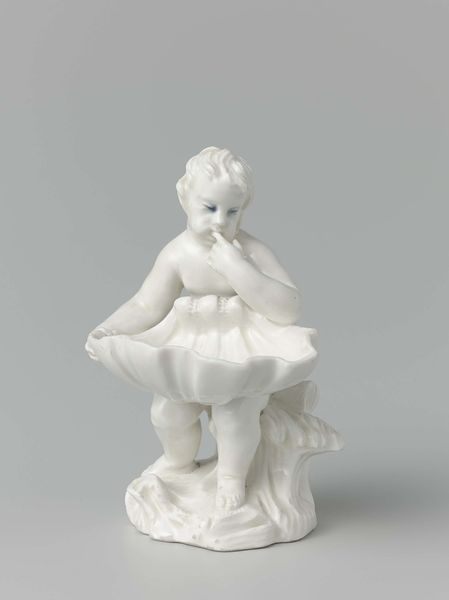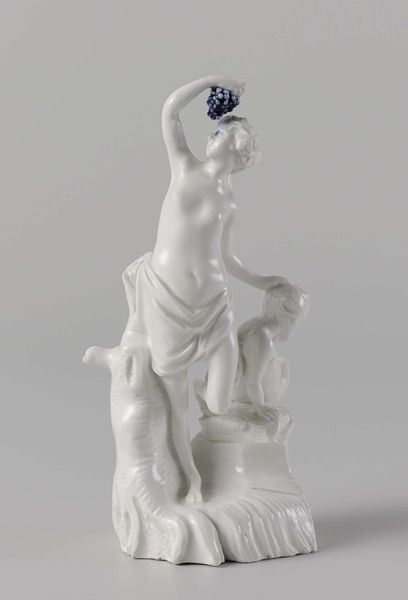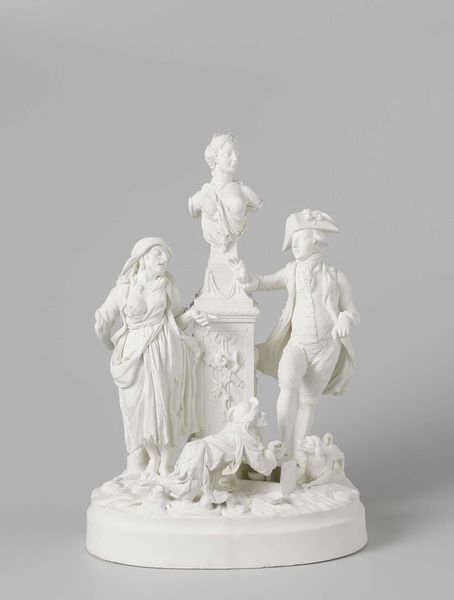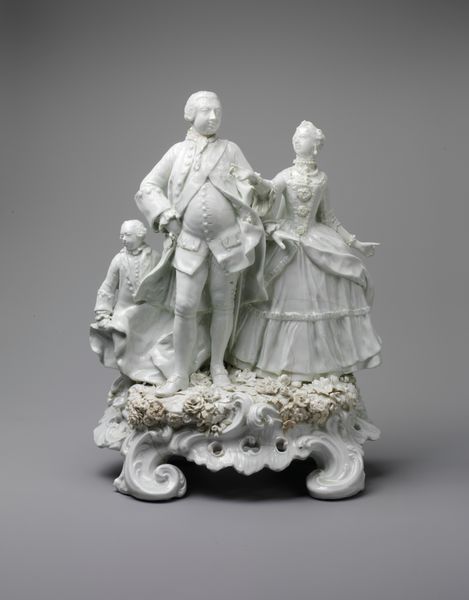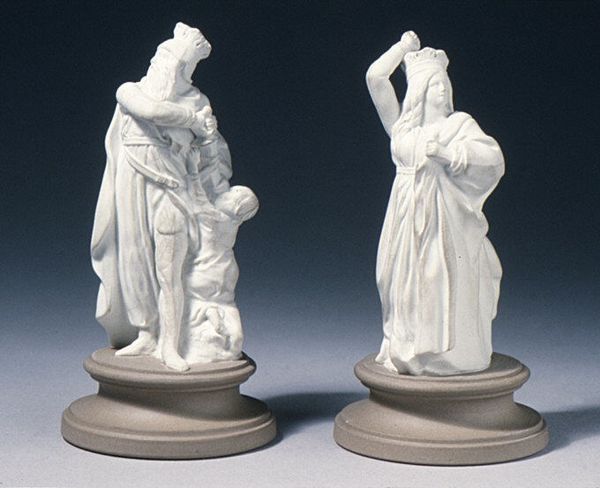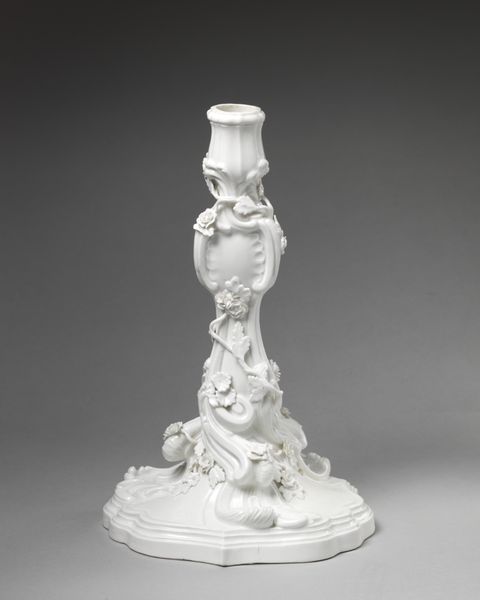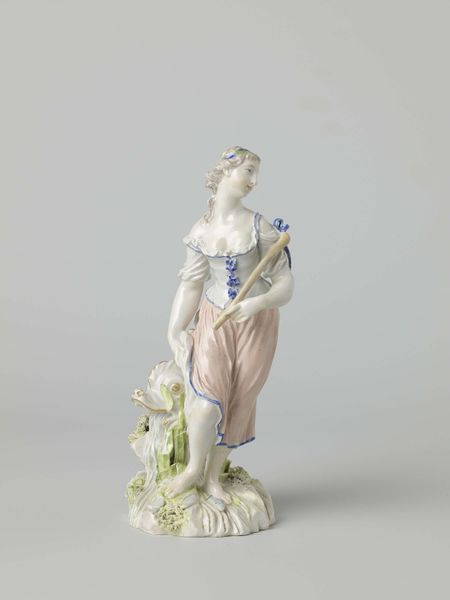
Dimensions: sight: 19.8 cm (7 13/16 in.)
Copyright: CC0 1.0
Curator: We're looking at "Isabella," a porcelain figurine made by the Nymphenburg Porcelain Manufactory. It's currently held in the Harvard Art Museums, standing just under 8 inches tall. Editor: The figures are so stark! The porcelain's whiteness renders them almost ghost-like, evoking a sense of classical austerity. Curator: Indeed. Porcelain itself carried significant social weight. Its preciousness signaled status, embodying European aspirations of refinement by imitating Chinese porcelain. Editor: The means of production are fascinating. Think about the specialized labor, the skills required to mold and fire such delicate material, and the social hierarchies embedded within the manufacturing process. Curator: Consider, too, the symbolism inherent in these figures. They represent idealized forms and social roles, reflecting the cultural values and power structures of their time. The figures' poses and garments also echo prevalent notions of gender and propriety. Editor: Right, and the figurines themselves become commodities, circulating within networks of consumption and reinforcing those values through their very existence. Curator: Ultimately, we see how these figurines aren't merely decorative objects; they're potent symbols of their era, reflecting complex social and cultural forces. Editor: Yes, by examining the material and its making, we uncover layers of historical context and understand the art's broader implications.
Comments
No comments
Be the first to comment and join the conversation on the ultimate creative platform.

